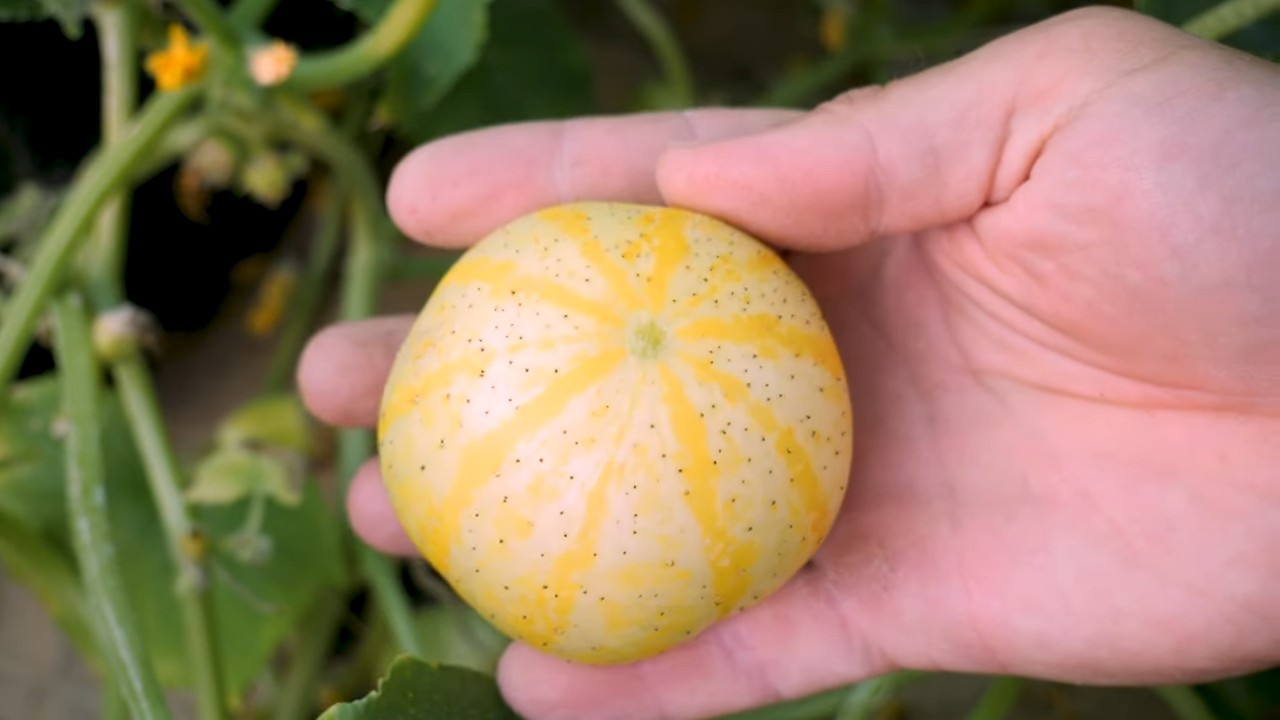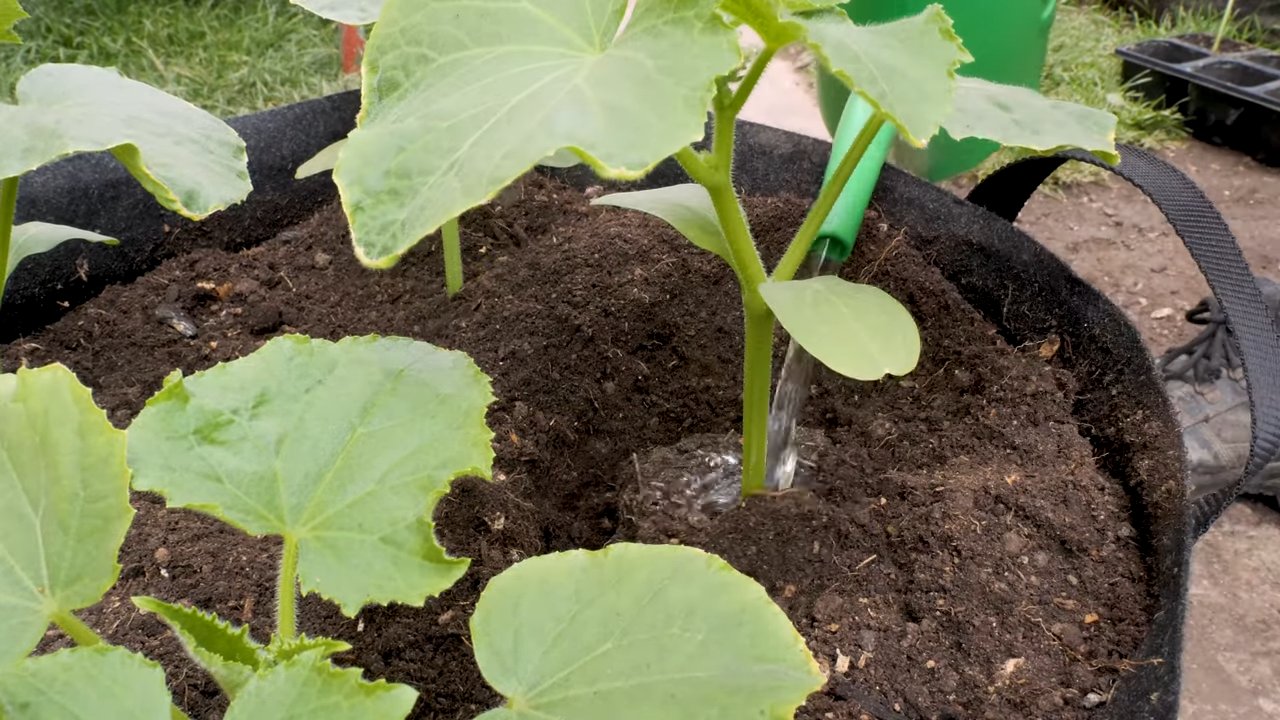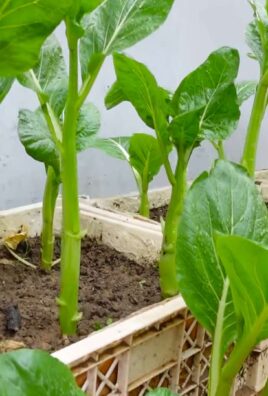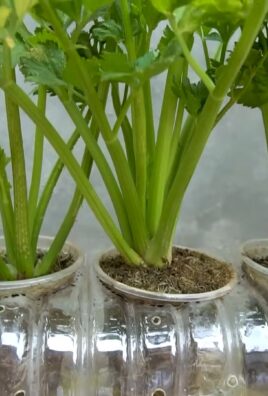Lemon Cucumber Growing Tips: Ever dreamt of strolling through your backyard, plucking a perfectly round, sunshine-yellow cucumber right off the vine? Sounds like something out of a fairytale, right? Well, it doesn’t have to be! I’m here to let you in on a little secret: growing lemon cucumbers is surprisingly easy and incredibly rewarding. This DIY guide will unlock the secrets to cultivating these unique and delightful fruits right in your own home garden.
While the exact origins of the lemon cucumber are a bit hazy, they’ve been gaining popularity for their mild, slightly sweet flavor and their adorable, lemon-like appearance. Think of them as the quirky, fun-loving cousin of the traditional green cucumber. For centuries, home gardening has been a way for people to connect with nature, provide fresh produce for their families, and find a sense of peace and accomplishment. And let’s be honest, who wouldn’t want to impress their friends and neighbors with these unusual beauties?
But why should you bother with these lemon cucumber growing tips? Because store-bought cucumbers simply can’t compare to the taste and satisfaction of harvesting your own. Plus, growing your own food is a fantastic way to reduce your carbon footprint and ensure you’re eating healthy, pesticide-free produce. In this article, I’ll share my tried-and-true methods for successfully growing lemon cucumbers, from seed to harvest. Get ready to transform your garden into a haven for these sunny delights!

Growing Lemon Cucumbers: A Zesty DIY Guide for a Bountiful Harvest
Alright, fellow gardening enthusiasts! Let’s dive into the wonderful world of lemon cucumbers. These quirky, yellow, and slightly tangy cucumbers are a delightful addition to any garden, and trust me, they’re surprisingly easy to grow. I’m going to walk you through everything you need to know, from seed to harvest, so you can enjoy these little bursts of sunshine straight from your backyard.
Choosing Your Seeds and Starting Indoors (Optional)
* Seed Selection: First things first, you need seeds! Look for reputable seed suppliers online or at your local garden center. Make sure they specifically say “Lemon Cucumber” or “Crystal Apple Cucumber” (they’re the same thing!).
* Starting Indoors (Optional): While you can directly sow lemon cucumber seeds into the ground, starting them indoors gives them a head start, especially if you live in a region with a shorter growing season. I usually start mine indoors about 3-4 weeks before the last expected frost.
Step-by-Step Indoor Seed Starting:
1. Gather Your Supplies: You’ll need seed starting trays or small pots, seed starting mix (not regular potting soil!), a spray bottle, and a warm, sunny location or a grow light.
2. Prepare the Trays: Fill your seed starting trays or pots with the seed starting mix. Gently tap them to settle the soil.
3. Sow the Seeds: Plant 2-3 seeds per cell or pot, about ½ inch deep.
4. Water Gently: Use a spray bottle to moisten the soil. Avoid overwatering, as this can lead to damping off (a fungal disease that kills seedlings).
5. Provide Warmth and Light: Place the trays in a warm location (around 70-75°F) and provide plenty of light. If you don’t have a sunny window, use a grow light. I keep my grow light on for about 14-16 hours a day.
6. Keep the Soil Moist: Check the soil daily and water gently when the top inch feels dry.
7. Thin the Seedlings: Once the seedlings have their first true leaves (the second set of leaves that appear after the initial seed leaves), thin them to one plant per cell or pot. Choose the strongest-looking seedling and snip off the others at the soil line.
Preparing Your Garden Bed
* Sunlight: Lemon cucumbers need at least 6-8 hours of sunlight per day. Choose a location in your garden that gets plenty of sunshine.
* Soil: They prefer well-drained, fertile soil with a pH between 6.0 and 7.0.
* Soil Amendment: Before planting, amend your soil with plenty of compost or well-rotted manure. This will provide essential nutrients and improve drainage. I usually dig in a generous amount – about 2-3 inches – into the top 6-8 inches of soil.
* Spacing: Lemon cucumbers need plenty of space to grow. Space your plants about 2-3 feet apart in rows that are 4-5 feet apart.
* Trellising: These cucumbers are vining plants, so they’ll need a trellis or other support to climb on. This will keep the fruits off the ground, improve air circulation, and make harvesting easier. I personally prefer using a sturdy trellis made of wood or metal. You can also use a fence or even a tomato cage for support.
Planting Your Lemon Cucumber Seedlings or Seeds
* Hardening Off (If Starting Indoors): Before transplanting your seedlings outdoors, you’ll need to harden them off. This means gradually exposing them to outdoor conditions over a period of about a week. Start by placing them in a sheltered location for a few hours each day, gradually increasing the amount of time they spend outdoors.
* Planting Time: Wait until the danger of frost has passed and the soil has warmed up before planting your lemon cucumber seedlings or seeds.
* Planting Seedlings: Dig a hole that is slightly larger than the root ball of your seedling. Gently remove the seedling from its pot and place it in the hole. Backfill with soil and water thoroughly.
* Direct Sowing Seeds: Sow seeds directly into the ground about ½ inch deep. Water gently. You may want to plant a few extra seeds per hill and then thin them to the strongest plant once they emerge.
Step-by-Step Planting:
1. Prepare the Planting Hole: Dig a hole that’s twice as wide as the root ball of your seedling and just as deep.
2. Amend the Hole (Optional): I like to add a handful of compost or bone meal to the bottom of the hole to give the roots a little boost.
3. Gently Remove the Seedling: Carefully remove the seedling from its container, being gentle with the roots. If the roots are tightly bound, gently loosen them with your fingers.
4. Position the Seedling: Place the seedling in the hole, making sure the top of the root ball is level with the surrounding soil.
5. Backfill and Water: Fill the hole with soil, gently firming it around the base of the plant. Water thoroughly to settle the soil.
6. Mulch (Optional): Add a layer of mulch around the base of the plant to help retain moisture and suppress weeds. I like to use straw or wood chips.
Caring for Your Lemon Cucumber Plants
* Watering: Lemon cucumbers need consistent watering, especially during hot, dry weather. Water deeply and regularly, aiming for about 1 inch of water per week. Avoid overhead watering, as this can lead to fungal diseases. I prefer to water at the base of the plant using a soaker hose or drip irrigation.
* Fertilizing: Feed your lemon cucumber plants with a balanced fertilizer every 2-3 weeks. You can use a liquid fertilizer or a slow-release granular fertilizer. Follow the instructions on the fertilizer package. I often use a fertilizer that’s specifically formulated for vegetables.
* Weeding: Keep your garden bed free of weeds, as they can compete with your lemon cucumber plants for nutrients and water. Hand-pull weeds regularly or use a hoe to cultivate the soil.
* Pest Control: Keep an eye out for common cucumber pests, such as cucumber beetles, squash bugs, and aphids. You can control these pests with insecticidal soap, neem oil, or by hand-picking them off the plants. I always try to use organic pest control methods whenever possible.
* Disease Prevention: To prevent fungal diseases, such as powdery mildew and downy mildew, provide good air circulation around your plants and avoid overhead watering. You can also spray your plants with a fungicide if necessary.
Harvesting Your Lemon Cucumbers
* Harvest Time: Lemon cucumbers are typically ready to harvest about 50-60 days after planting.
* Harvesting Tips: Harvest the cucumbers when they are about 2-3 inches in diameter and have turned a pale yellow color. They should feel firm to the touch. Use a sharp knife or scissors to cut the cucumbers from the vine, leaving a short stem attached.
* Regular Harvesting: Harvest your lemon cucumbers regularly to encourage the plant to produce more fruit. Overripe cucumbers will become bitter and seedy.
Step-by-Step Harvesting:
1. Check for Ripeness: Look for cucumbers that are about 2-3 inches in diameter and have a pale yellow color. They should feel firm to the touch.
2. Use a Sharp Knife or Scissors: Carefully cut the cucumber from the vine, leaving a short stem (about 1 inch) attached. This will help prevent the cucumber from rotting.
3. Handle with Care: Lemon cucumbers are delicate, so handle them gently to avoid bruising.
4. Store Properly: Store your harvested lemon cucumbers in the refrigerator for up to a week.
Dealing with Common Problems
* Powdery Mildew: This fungal disease appears as a white, powdery coating on the leaves. To prevent it, ensure good air circulation and avoid overhead watering. Treat with a fungicide if necessary.
* Cucumber Beetles: These pests can damage leaves and spread diseases. Use insecticidal soap or neem oil to control them. You can also cover your plants with row covers to prevent them from reaching the plants.
* Squash Bugs: These pests suck sap from the leaves, causing them to wilt and die. Hand-pick them off the plants or use insecticidal soap.
* Blossom End Rot: This condition causes the blossom end of the cucumber to rot. It’s usually caused by inconsistent watering or a calcium deficiency. Ensure consistent watering and amend the soil with calcium if necessary.
Enjoying Your Harvest
* Eating Fresh: Lemon cucumbers are delicious eaten fresh, sliced in salads, or pickled. Their slightly tangy flavor makes them a refreshing treat.
* Pickling: They’

Conclusion
So, there you have it! Mastering the art of growing lemon cucumbers isn’t just about planting seeds and hoping for the best; it’s about understanding their unique needs and providing the right environment for them to thrive. This DIY approach, focusing on soil preparation, strategic watering, and consistent support, is a game-changer for anyone looking to cultivate a bountiful harvest of these delightful, citrusy treats.
Why is this DIY trick a must-try? Because it empowers you to take control of your garden’s success. Instead of relying on generic advice that may not be tailored to the specific demands of lemon cucumbers, you’re actively creating the optimal conditions for their growth. This translates to healthier plants, more abundant yields, and, ultimately, a more rewarding gardening experience. Think of it as unlocking a secret code to cucumber contentment!
But don’t stop there! Experiment with variations to personalize your approach. Consider companion planting – basil and marigolds are excellent choices for deterring pests and attracting beneficial insects. You could also explore different trellising methods to find what works best for your space and the growth habit of your lemon cucumber vines. Perhaps you’ll discover that a vertical tower system maximizes sunlight exposure or that a simple A-frame trellis provides the perfect support.
And speaking of personalization, remember that soil composition can vary significantly from region to region. While we’ve emphasized the importance of well-draining, nutrient-rich soil, it’s always a good idea to conduct a soil test to determine any specific deficiencies. Amending your soil with compost, aged manure, or other organic matter can further enhance its fertility and provide your lemon cucumbers with the essential nutrients they need to flourish.
Furthermore, don’t underestimate the power of observation. Regularly inspect your plants for signs of pests or diseases. Early detection is key to preventing widespread problems and ensuring a healthy harvest. Keep an eye out for common cucumber pests like aphids, cucumber beetles, and squash bugs, and take appropriate action to control them.
The beauty of gardening lies in its iterative nature. It’s a constant process of learning, adapting, and refining your techniques. So, embrace the challenges, celebrate the successes, and don’t be afraid to experiment.
We wholeheartedly encourage you to try this DIY trick for growing lemon cucumbers. We are confident that you’ll be amazed by the results. But more importantly, we want to hear about your experience! Share your tips, tricks, and triumphs in the comments below. Let’s create a community of lemon cucumber enthusiasts who are passionate about sharing their knowledge and helping each other grow. Your insights could be invaluable to other gardeners who are just starting out.
So, grab your seeds, prepare your soil, and get ready to embark on a lemon cucumber growing adventure. With a little bit of effort and a whole lot of love, you’ll be enjoying a bountiful harvest of these unique and delicious cucumbers in no time. Happy gardening!
FAQ
What exactly are lemon cucumbers, and why should I grow them?
Lemon cucumbers are a unique variety of cucumber that are round and yellow, resembling lemons in appearance. They have a mild, slightly sweet flavor with a hint of citrus, making them a refreshing addition to salads, snacks, and even cocktails. Growing them yourself ensures you have access to fresh, organic produce, and it’s a fun and rewarding gardening experience. Plus, they are relatively easy to grow compared to some other vegetables.
How much sunlight do lemon cucumbers need?
Lemon cucumbers thrive in full sun, requiring at least 6-8 hours of direct sunlight per day. Insufficient sunlight can lead to leggy growth, reduced fruit production, and increased susceptibility to diseases. Choose a planting location that receives ample sunlight throughout the day. If you live in a particularly hot climate, some afternoon shade may be beneficial to prevent the plants from overheating.
What kind of soil is best for growing lemon cucumbers?
Lemon cucumbers prefer well-draining, fertile soil that is rich in organic matter. The ideal soil pH is between 6.0 and 7.0. Before planting, amend your soil with compost, aged manure, or other organic matter to improve its drainage, fertility, and water-holding capacity. Avoid heavy clay soils, as they can become waterlogged and inhibit root growth. If you have clay soil, consider growing your lemon cucumbers in raised beds or containers.
How often should I water my lemon cucumber plants?
Water your lemon cucumber plants deeply and regularly, especially during hot, dry weather. Aim to keep the soil consistently moist but not waterlogged. Water at the base of the plants to avoid wetting the foliage, which can increase the risk of fungal diseases. A good rule of thumb is to water when the top inch of soil feels dry to the touch. Mulching around the plants can help retain moisture and suppress weeds.
Do lemon cucumbers need trellising?
Yes, lemon cucumbers are vining plants that benefit from trellising. Trellising provides support for the vines, improves air circulation, and makes it easier to harvest the cucumbers. You can use a variety of trellising methods, such as A-frame trellises, vertical towers, or even a simple fence. Train the vines to climb the trellis as they grow, and prune any excessive growth to maintain good air circulation.
When is the best time to plant lemon cucumbers?
Lemon cucumbers are warm-season crops that should be planted after the last frost. You can start seeds indoors 4-6 weeks before the last frost and transplant them outdoors once the weather has warmed up. Alternatively, you can direct sow seeds into the garden once the soil temperature reaches at least 60°F (15°C).
How long does it take for lemon cucumbers to mature?
Lemon cucumbers typically mature in 50-60 days from planting. You can harvest them when they are about the size of a lemon and have a pale yellow color. Overripe cucumbers will become bitter and seedy. Harvest regularly to encourage continued fruit production.
What are some common pests and diseases that affect lemon cucumbers?
Lemon cucumbers are susceptible to a variety of pests and diseases, including aphids, cucumber beetles, squash bugs, powdery mildew, and downy mildew. Regularly inspect your plants for signs of pests or diseases, and take appropriate action to control them. Organic pest control methods, such as insecticidal soap and neem oil, can be effective for controlling many common pests. Good air circulation and proper watering practices can help prevent fungal diseases.
Can I grow lemon cucumbers in containers?
Yes, lemon cucumbers can be successfully grown in containers, provided that the containers are large enough to accommodate their root systems. Choose a container that is at least 12 inches in diameter and depth. Use a well-draining potting mix and provide adequate support for the vines. Container-grown lemon cucumbers may require more frequent watering and fertilization than those grown in the ground.
How do I save seeds from lemon cucumbers?
To save seeds from lemon cucumbers, allow a few cucumbers to fully mature on the vine. The cucumbers will turn a deep yellow color and become soft. Scoop out the seeds and pulp, and rinse them thoroughly with water. Spread the seeds out on a paper towel to dry completely. Once the seeds are dry, store them in an airtight container in a cool, dark place.




Leave a Comment